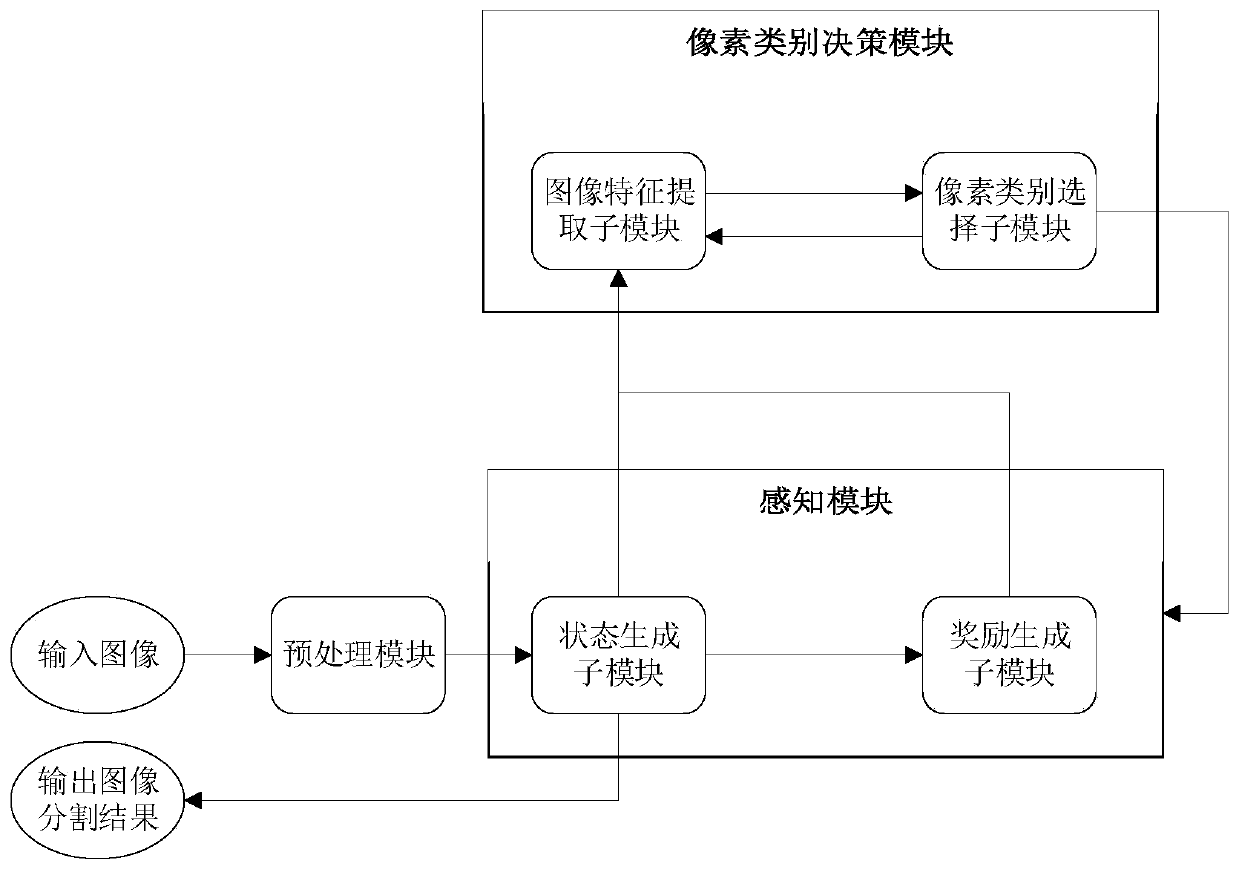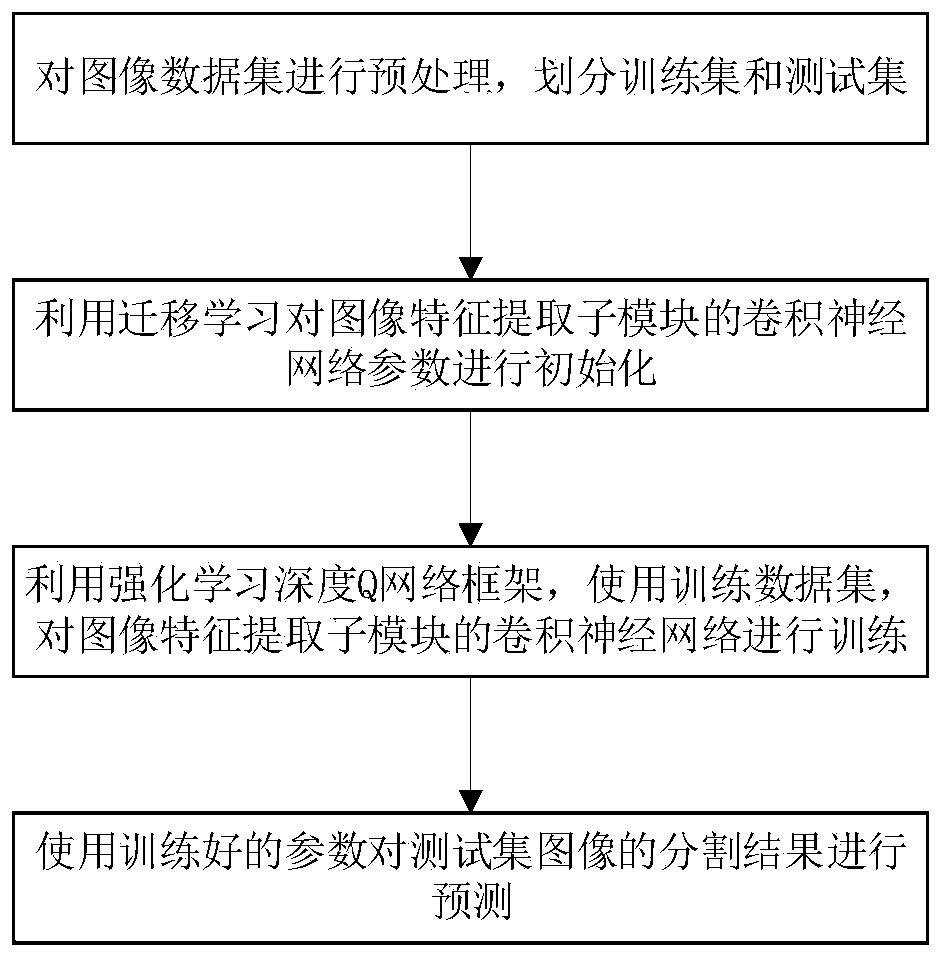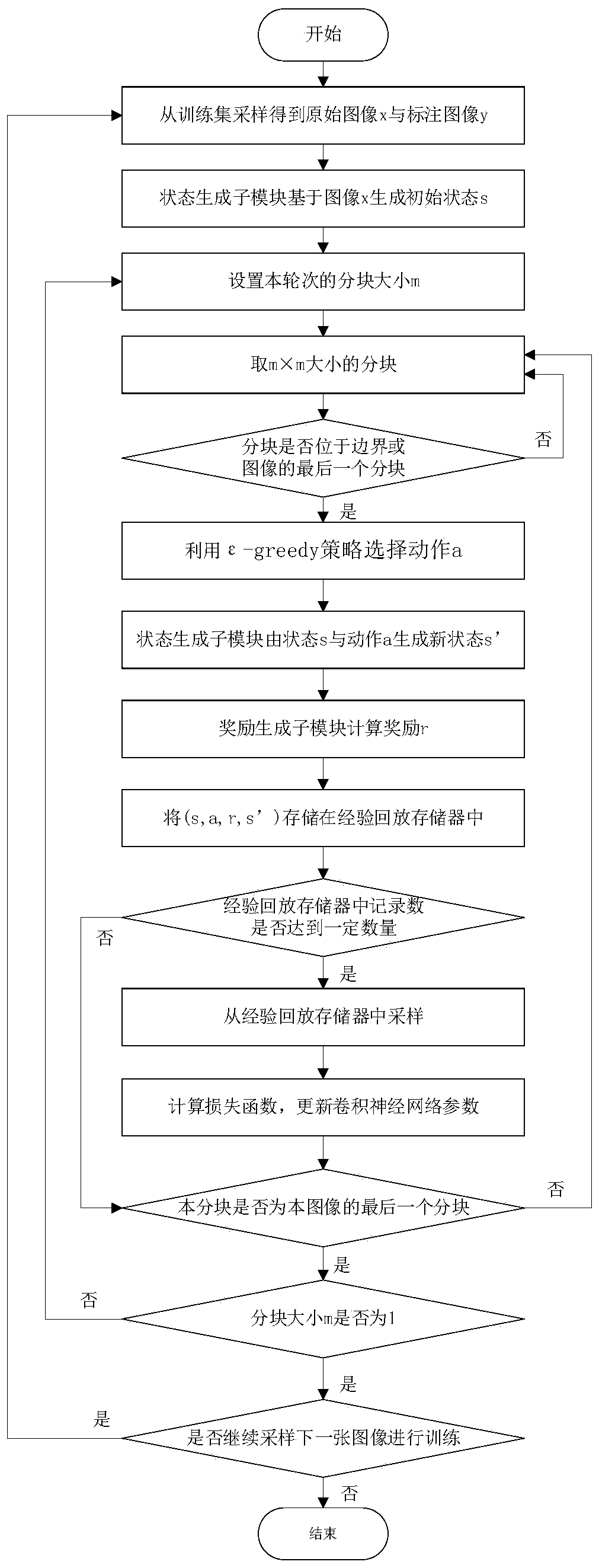Image semantic segmentation model based on reinforcement learning and transfer learning and modeling method
A technology of reinforcement learning and transfer learning, applied in the field of image semantic segmentation model and modeling based on reinforcement learning and transfer learning, can solve the problems of not fully considering the relationship between pixels and pixels, lack of spatial consistency, and insensitive to details. , to avoid too long training time, reduce training time, and achieve the effect of accurate details
- Summary
- Abstract
- Description
- Claims
- Application Information
AI Technical Summary
Problems solved by technology
Method used
Image
Examples
Embodiment 1
[0052] like figure 1 Shown is an embodiment of an image semantic segmentation model based on reinforcement learning and transfer learning in the present invention, including: a preprocessing module for preprocessing the original image; a perception module for the environment part in reinforcement learning; pixel The category decision module is used for the agent part in reinforcement learning; the preprocessing module, the perception module, and the pixel category decision module are sequentially connected by communication.
[0053] In addition, the perception module includes: a state generation sub-module for generating different states according to fine or rough levels; a reward generation sub-module for generating rewards; the state generation sub-module communicates with the reward generation sub-module and the preprocessing module.
[0054] Wherein, the rewards generated by the reward generation sub-module include split effect rewards and split ratio rewards.
[0055] Am...
Embodiment 2
[0058] like Figure 2 to Figure 3 Shown is a kind of modeling method of the image semantic segmentation model based on reinforcement learning and transfer learning of the present invention, comprises the following steps:
[0059] S1. Preprocessing the image data set through the preprocessing module, including adjusting the size of the entire image to a fixed size, cutting the original image to a fixed size, L×L×3, where L is the image side length, 3 is the number of pixel channels, And randomly rotate for image enhancement; then get the data set , and use 80% of the entire data set as a training set and 20% as a test set;
[0060] S2. Utilize migration learning to initialize the convolutional neural network parameter θ of the image feature extraction submodule; first find a large-scale image data set in a similar field as a source data set, such as the ImageNet data set, and use the model of the present invention to perform image processing The split data set is used as the t...
Embodiment 3
[0089] This embodiment is similar to Embodiment 2, the difference is that, as Figure 4 As shown, the specific steps of step S4 in this embodiment are as follows:
[0090] S41. For each image x_test of the test set i , the state generation sub-module splices the original image with the initial pixel category decision matrix to obtain the initial state s_test 1 ;
[0091] S42. Use the classification strategy to determine the block size m of this round;
[0092] S43. When entering the first round, directly execute step S44; when entering the nth (n ≥ 2 and n is a natural number) round, that is, starting from the second round, judge whether each block is in the boundary or image If so, execute step S44, otherwise keep the category decision of the current block in the previous round, directly move the state to the next block, and repeat step S43;
[0093] S44. The pixel category selection submodule selects the action a_test according to the Q value output by the image feature ...
PUM
 Login to View More
Login to View More Abstract
Description
Claims
Application Information
 Login to View More
Login to View More - R&D Engineer
- R&D Manager
- IP Professional
- Industry Leading Data Capabilities
- Powerful AI technology
- Patent DNA Extraction
Browse by: Latest US Patents, China's latest patents, Technical Efficacy Thesaurus, Application Domain, Technology Topic, Popular Technical Reports.
© 2024 PatSnap. All rights reserved.Legal|Privacy policy|Modern Slavery Act Transparency Statement|Sitemap|About US| Contact US: help@patsnap.com










